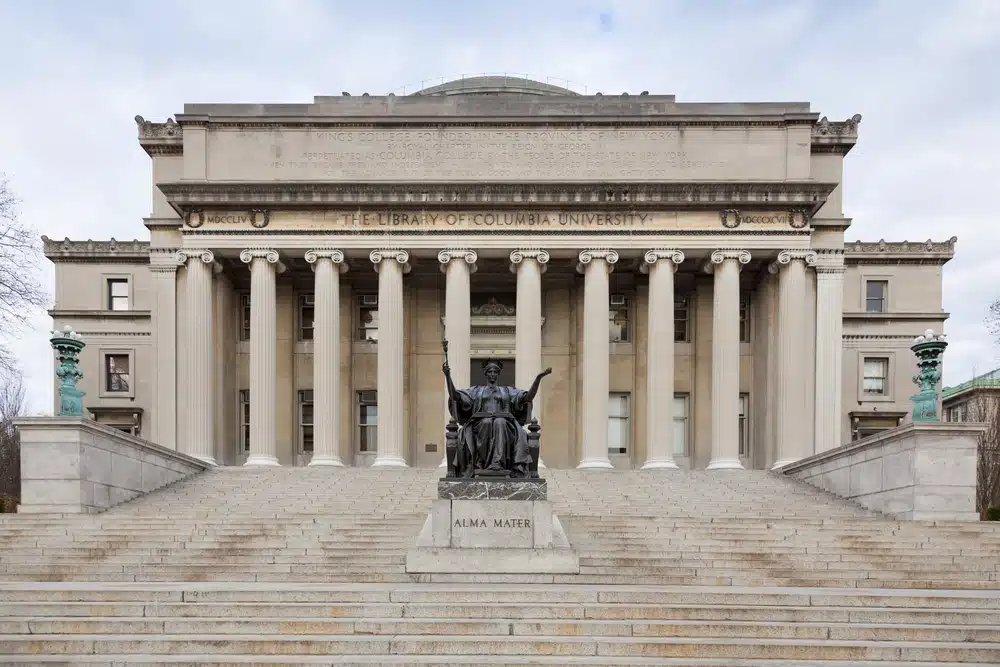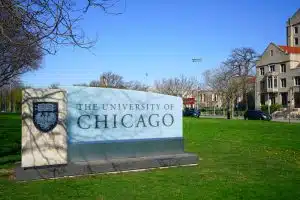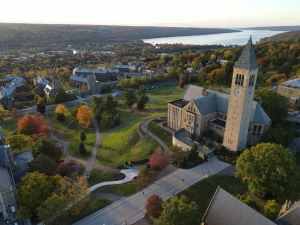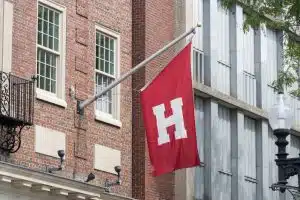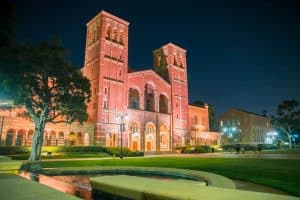Columbia University, an Ivy League school, is one of the best in the world, ranked #9 in Best Global Universities by the U.S. News & World Report in 2024. With over 100 Nobel laureates among its alumni and faculty and more than $1 billion in annual research funding, Columbia is a powerhouse for academic and professional success. But like any university, it has its ups and downs. So, what are the pros and cons of Columbia University, and is it the right fit for you? Let’s get into it and break it down.
- Pros of Columbia University
- Cons of Columbia University
- Fun Facts about Columbia University
- Frequently Asked Questions
- Takeaways
Pros of Columbia University
Let’s explore some of the key benefits of attending Columbia University to see if it’s the right match for you.
Prestigious academics
Columbia consistently ranks as one of the top universities in the world. For 2024, Forbes ranked it #6 in their Top Colleges list, while the U.S. News & World Report placed Columbia at #12 among National Universities. With a focus on everything from law to journalism and business to engineering, it’s a place where you’ll get an education that holds weight anywhere you go.
The Columbia Business School and School of Law, for instance, are ranked among the best globally. Columbia’s Business School is ranked #12 for Best Business Schools, and its School of Law holds the #8 spot for the Best Law Schools, both according to the U.S. News & World Report.
The 6:1 student-to-faculty ratio ensures you get personalized attention and professors who are industry leaders, like Joseph Stiglitz, a Nobel Prize-winning economist. It’s the kind of school where your education won’t just come from books but from people who are actively shaping the fields you’re studying. This is definitely one of the major pros when thinking about the pros and cons of Columbia University.
Prime location in New York City
Being in New York City is a major selling point when considering the pros and cons of Columbia University. Think about it: you’re in the heart of one of the most exciting cities in the world. Internships at companies like Google, JP Morgan, or The New York Times are within reach because you’re right there.
Columbia’s location in Morningside Heights means you get the best of both worlds—a classic campus feel mixed with everything NYC has to offer. From endless networking opportunities to access to world-class cultural institutions like the Metropolitan Museum of Art or Broadway, New York becomes part of your college experience. It’s not just about academics; it’s about what happens outside the classroom too.
Global influence and diverse community
Columbia is a hub for global diversity. With students from over 150 countries, you’re going to meet people from all corners of the world. That international perspective is embedded in the Columbia University culture. You’ll work on projects and case studies that consider global perspectives, which is crucial in today’s interconnected world.
With 52% of students identifying as people of color, Columbia’s diverse student body will expose you to different cultures, ideas, and ways of thinking. Whether through academic collaboration or social experiences, Columbia’s diverse student body offers valuable opportunities for personal growth and learning. This factor stands out when looking at the pros and cons of Columbia University.
The Core Curriculum
The Core Curriculum is one of the things that really sets Columbia apart from other Ivy League schools. It requires all undergraduates, no matter their major, to take courses in philosophy, literature, history, and the arts. It’s challenging, and not every student loves it, but it’s designed to make you think deeply across disciplines.
You’ll read Plato, debate Shakespeare, and explore Einstein’s theories—no matter your field of study. For some, this wide-ranging intellectual exploration is a dream come true. It pushes you to think critically and exposes you to ideas you may never have encountered otherwise. If you want to be a well-rounded thinker, the Core is a big pro when weighing the pros and cons of Columbia University.
Research opportunities
When thinking about the pros and cons of Columbia University, the opportunities for research is definitely something to consider. In 2022, the university brought in over $1 billion in research funding, which makes it one of the largest research institutions in the country. What does that mean for you? Opportunities to work on cutting-edge projects from your first year.
For instance, Columbia undergraduates have been helping develop a method to improve brain imaging using AI, which has since been adopted by medical researchers globally. Another group of students contributed to a climate modeling project, which was featured in national policy discussions on environmental sustainability.
Whether you’re interested in neuroscience, climate change, or artificial intelligence, Columbia offers research opportunities that let you explore areas that matter to you. You might find yourself working alongside renowned faculty members like Dr. Rafael Yuste, a leading figure in neurotechnology and brain research, or Dr. Wafaa El-Sadr, an expert in global health and epidemiology.
Columbia’s facilities are equally impressive. The Zuckerman Mind Brain Behavior Institute, for example, is a world-class center equipped with the latest technology that provides students with access to top-tier resources for their research projects.
Notable alumni
Columbia University has produced many influential alumni across a variety of fields, from politics to entertainment. Here are some of the most notable alumni:
- Barack Obama. The 44th President of the United States, Obama graduated from Columbia in 1983. He went on to make history as the first African-American president and is known for significant legislative achievements like the Affordable Care Act.
- Ruth Bader Ginsburg. A trailblazing Supreme Court Justice, Ginsburg earned her law degree from Columbia. She was a champion for gender equality and civil rights throughout her career.
- Warren Buffett. Often regarded as one of the greatest investors of all time, Buffett earned his master’s degree from Columbia Business School. His company, Berkshire Hathaway, is a global leader in investment.
- Madeleine Albright. The first female U.S. Secretary of State, Albright is a Columbia graduate. She played a key role in shaping U.S. foreign policy during the Clinton administration.
- Amelia Earhart. Although known for her aviation feats, Earhart briefly studied at Columbia before becoming the first woman to fly solo across the Atlantic Ocean, inspiring generations.
These distinguished alumni show just how much impact Columbia graduates can have across different fields. From public service to law and business, Columbia’s alumni network is huge and influential. This is a definite pro when considering the pros and cons of Columbia University if you’re looking for strong connections and career opportunities.
Financial aid and scholarships
One of the big draws of Columbia is its commitment to making education accessible. Nearly 50% of students receive financial aid and the average package awarded is $52,073, which can significantly help with Columbia’s high tuition costs. For U.S. students, the school is need-blind, meaning your financial situation won’t impact your chances of getting in.
What’s great about Columbia is that they pledge to meet 100% of demonstrated financial need. They even offer no-loan financial aid packages for families with incomes under a certain threshold, which means less debt after graduation. If you’re worried about paying for college, Columbia’s robust financial aid options are a definite pro when weighing the pros and cons of Columbia University.
Campus resources and facilities
Columbia University offers a variety of campus resources to support students academically, physically, and emotionally. If you’re looking for career guidance, health services, or creative spaces, Columbia has facilities that cater to every aspect of student life:
- Center for Career Education. Offers internships, job placements, networking events, and workshops to prepare students for life after graduation.
- Butler Library. One of the largest academic libraries in the U.S., providing access to extensive research materials and quiet study spaces.
- Columbia Health. Provides primary care, counseling, and mental health services to ensure students are supported physically and emotionally.
- Lerner Hall. Columbia’s student center with meeting rooms, study spaces, dining options, and performance areas.
- Dodge Physical Fitness Center. A state-of-the-art gym with workout facilities, swimming pools, and intramural sports leagues.
- Columbia Makerspace. A creative lab equipped with 3D printers, laser cutters, and woodworking tools, open to all students for hands-on projects.
At Columbia, you’re getting both quality education and access to tools and resources that help you grow in every way. With all these options, campus life at Columbia is designed to set you up for success.
Cons of Columbia University
Columbia is known for its top-notch academics and a ton of opportunities, but there are a few aspects that could be viewed as disadvantages based on your preferences and your situation. Let’s get into some of the cons to give you a balanced perspective on what Columbia life is really like.
High cost of attendance
One of the biggest downsides to Columbia is its cost. For the 2024-2025 academic year, the cost of attendance is over $93,000—and yes, that’s per year. While about 50% of undergraduates receive financial aid, that still leaves many students with a significant financial burden. This is an important factor to think about when evaluating the pros and cons of Columbia University.
Columbia is generous with its need-based aid, but if you don’t qualify, you’ll need to consider whether the high price tag is worth it for you. The good news? Columbia’s return on investment is strong, with over 91% of graduates being employed within two years. However, the initial sticker shock can be a major con if you’re trying to avoid significant debt.
Cost of living in NYC
Another major drawback to attending Columbia is the high cost of living in New York City. New York City’s cost of living is significantly higher than the national average, with overall living expenses being 128% more. Housing costs are even more extreme, sitting at 408% above the national average. Rent for a one-bedroom apartment averages over $4,000 a month, and groceries are just as pricey, being 15% higher than the national average.
Even with Columbia’s financial aid, day-to-day expenses add up quickly. Transportation, meals, and personal items can strain a student’s budget, making it essential to plan and budget carefully for living in the city. If you’re worried about financial concerns, this might be a con when evaluating the pros and cons of Columbia University.
Intense academic pressure and competitive atmosphere
Let’s be real: Columbia’s competitive atmosphere can be a double-edged sword. On the one hand, being surrounded by high-achievers can push you to be your best. On the other hand, it can feel a bit cutthroat at times.
The Core Curriculum at Columbia is notoriously demanding. Combined with the rigorous academic programs, it creates a high-pressure environment. The acceptance rate is just 3.9%, meaning you’re up against a very competitive applicant pool from the start.
Columbia’s GPA and test score requirements are also particularly cutthroat. Most admitted students have a GPA of 4.12 or higher. Along with stellar grades, Columbia expects SAT scores between 1500-1560 or ACT scores between 34-35. The academic workload is intense, and students are expected to perform at a very high level.
If you’re someone who thrives in a collaborative, supportive environment, this aspect of Columbia might feel like a con. If pressure and competition fuels your ambition, you’ll probably love it. Either way, it’s something to consider when assessing the pros and cons of Columbia University.
Fun Facts about Columbia University
If you’re still weighing the pros and cons of Columbia University, sometimes learning about the fun facts about the school can help sway your decision. Here are some fun facts that highlight Columbia University’s rich history, notable contributions, and interesting campus life:
- Oldest college in New York. Columbia was founded in 1754, which makes it the oldest institution of higher learning in New York and the fifth oldest in the U.S.
- Birthplace of FM radio. Columbia’s professor Edwin Howard Armstrong invented FM radio, revolutionizing communication.
- Hollywood connection. The steps of Columbia’s Low Library have been featured in many films, including Spider-Man and Ghostbusters.
- Nobel Prize legacy. Columbia has produced over 100 Nobel laureates, one of the highest numbers of any university in the world. Some notable examples include Barack Obama (Peace), Richard Axel (Medicine), and Milton Friedman (Economics).
- Secret tunnels. Columbia’s underground tunnels were originally built for heating pipes but have become a campus legend, with rumors of CIA experiments being conducted there.
- Home of the Pulitzer Prize. Columbia administers the prestigious Pulitzer Prizes, which honor excellence in journalism, literature, and musical composition.
- Beginning of the Manhattan Project. The groundwork for the Manhattan Project started at Columbia during World War II.
- Famous professors. Renowned physicist Richard Feynman and author Jack Kerouac were both once part of Columbia’s community.
- First gay rights group. In 1967, Columbia became the first U.S. university to officially recognize a gay rights student group.
And there you have it—just a few fun facts about Columbia University that make this university so unique. From its rich history to its cutting-edge contributions to science and culture, Columbia has shaped plenty of groundbreaking moments.
Whether you’re still weighing the pros and cons of Columbia University or leaning toward a decision, these facts show that Columbia is more than just a top academic institution—it’s a place where history, innovation, and culture come together.
Frequently Asked Questions
1. What is Columbia University known for?
Columbia University is known for its prestigious academics, top-ranked business and law schools, and its Core Curriculum. It also excels in research, attracting over $1 billion in funding annually.
2. What is unique about Columbia University?
Columbia’s Core Curriculum is a standout feature, requiring all students to take courses in a variety of disciplines, promoting well-rounded intellectual development. Its location in New York City also provides unique access to internships and networking.
3. How diverse is Columbia University?
Columbia boasts a diverse student body, with over 52% identifying as people of color and students hailing from over 150 countries, creating a global learning environment. If diversity is important for you, this is a major pro when weighing the pros and cons of Columbia University.
4. How much does it cost to attend Columbia University?
The total cost of attendance for Columbia can exceed $93,000 per year, but the university offers generous need-based financial aid to help cover the costs for eligible students.
5. Is Columbia University a good school?
Yes, Columbia is consistently ranked among the top universities globally. In 2024, it ranked #6 on Forbes’ Top Colleges list and #12 among National Universities according to U.S. News & World Report. These high rankings are definitely something to consider if you’re looking at the pros and cons of Columbia University.
Takeaways
Now that we’ve gone over the pros and cons of Columbia University, here’s a quick breakdown to help you figure out if it’s the right school for you:
- Columbia University’s academic prestige makes it an excellent choice if you’re looking for top-tier education in fields like business, law, and engineering.
- The prime New York City location offers unique opportunities for internships, but the high cost of living in NYC is a drawback for many.
- The diverse and multicultural community enriches student life, but the intense academic pressure can be a bit much.
- Feeling overwhelmed by all the pros and cons of Columbia University? You don’t have to figure it out alone. A college admissions consultant can offer expert advice and support to help you make the best choice for your future.



